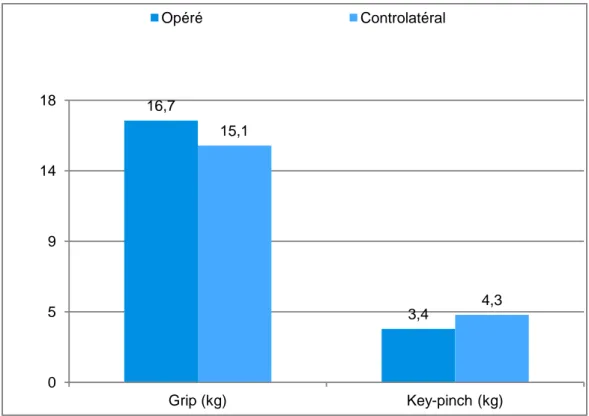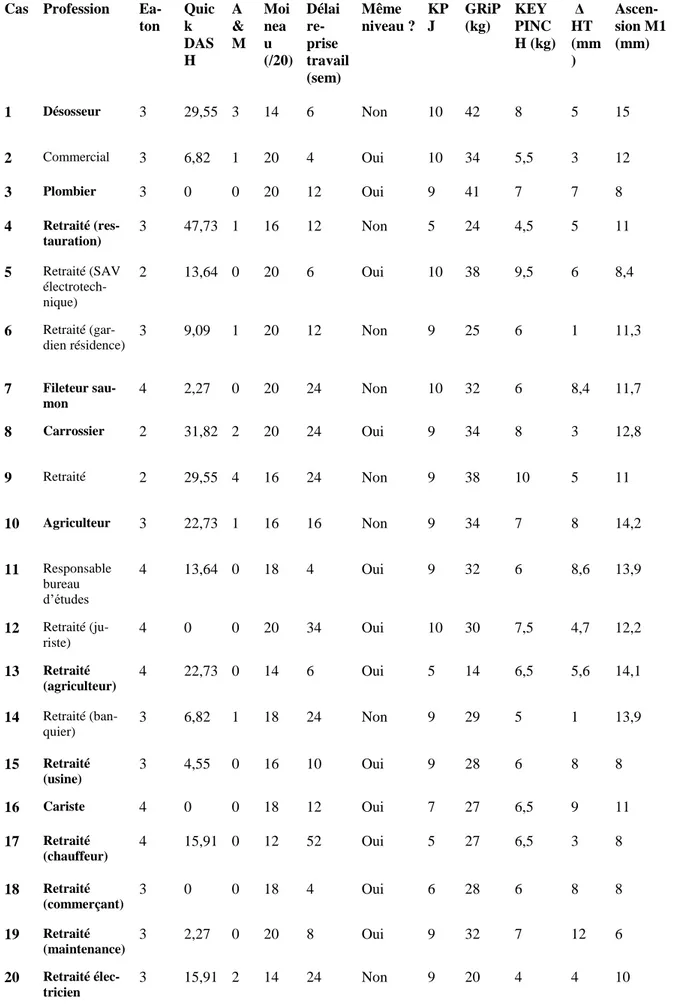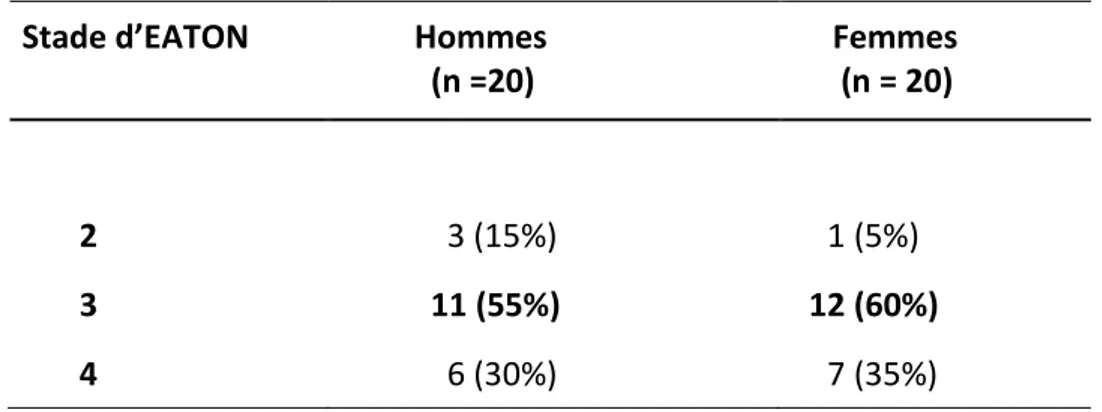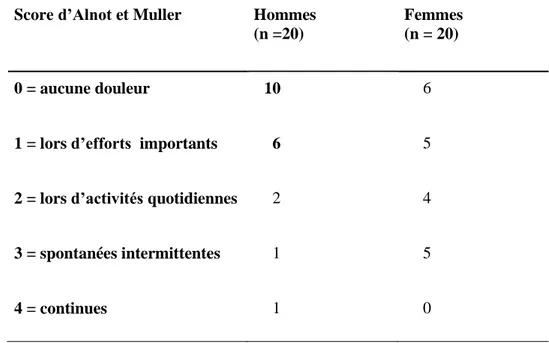Place de la trapézectomie avec ligamentoplatie-suspension dans le traitement chirurgical de la rhizarthrose chez l'homme : à propos de 20 cas
Texte intégral
Figure
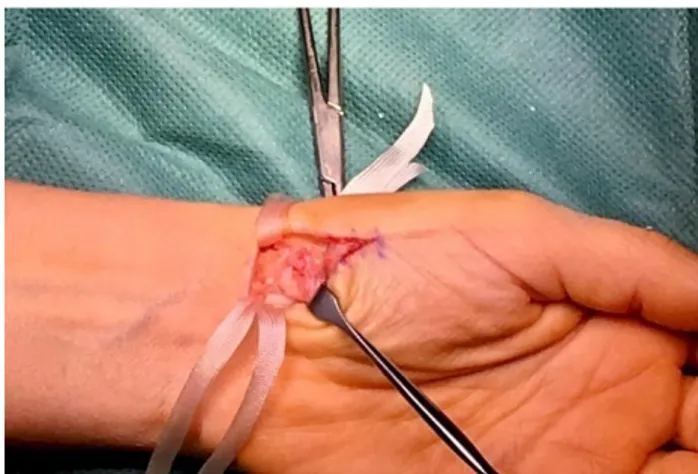

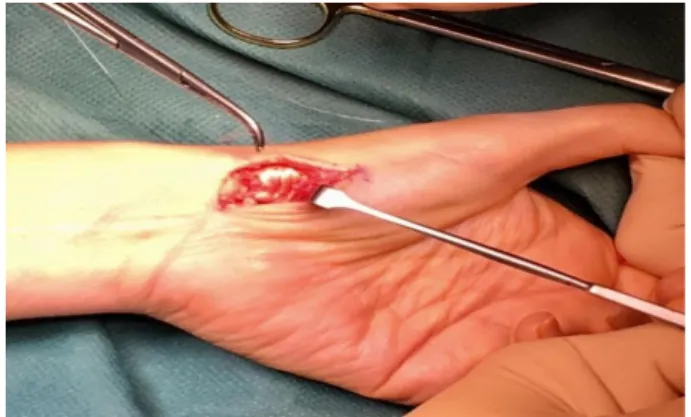
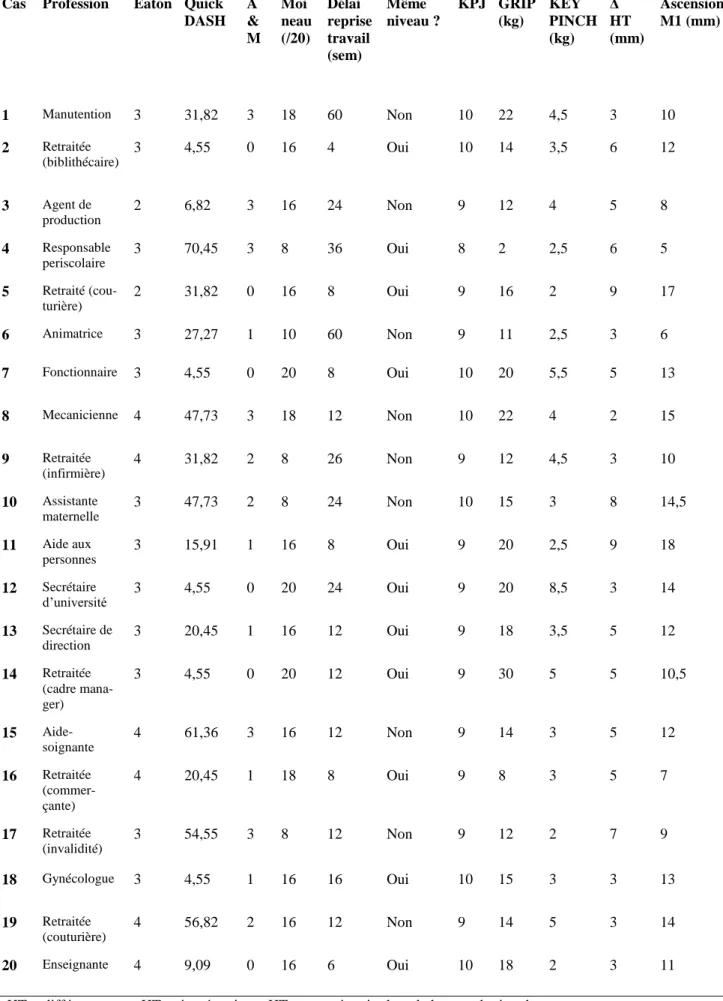
Outline
Documents relatifs
The similar sICH risk in both the age groups and the find- ing that the magnitude of differences in mortality and favour- able outcome between stroke patients aged <80 and ≥80
However, the extent of the deletion was variable: in two patients with the most extensive deletions the deletion breakpoint mapped between RAF1 and D3S1250, in one patient the
Available in 32 (97%), 33 (94%) and 26 (100%) patients with MRI and unilateral chest wall stabilization, with no MRI or bilateral chest wall stabilization and painful dislocated
omic and environmental issues associated with large-scale artificial mass-transfers of water from a water-surplus to a water-deficient region in order to further the
it remained an open question to find an explicit example of a function that is homogeneous of degree one and rank-one convex, but not convex.. We produce here a family of
The aims of this study were: (i) to quantify near-infrared optical properties of normal cervical tissues and high-grade squamous intra-epithelial lesions (H-SIL); (ii) to assess the
Les filles ont une meilleure appréciation de leurs compétences que les garçons, elles sont plus motivées pour écouter de la musique et ont glo- balement une attitude
Neural crest cells (gray) delaminate from the dorsal neural tube and migrate into dorsal roots, dorsal root ganglia and peripheral nerves to give rise to sensory neurons (gray),
